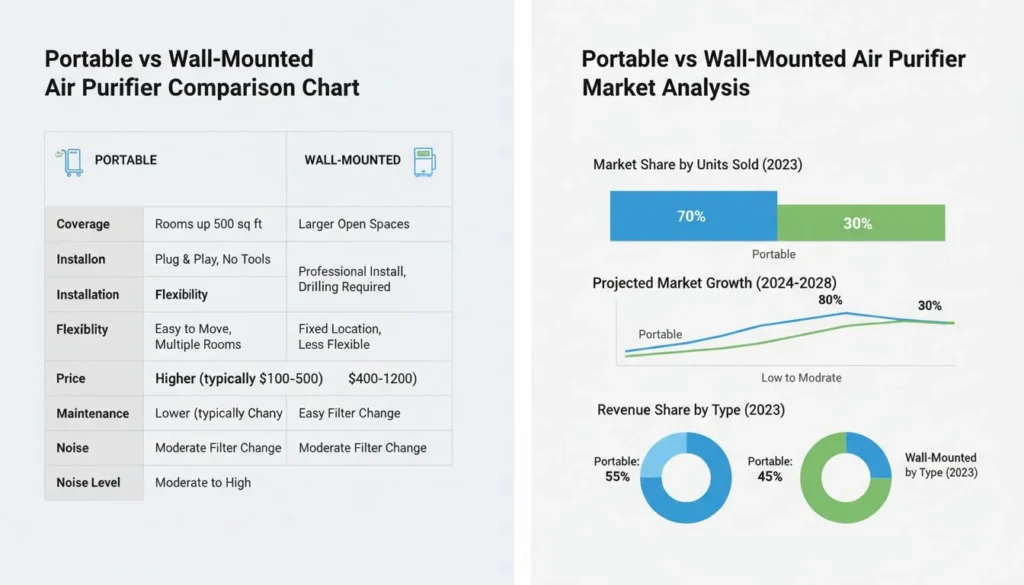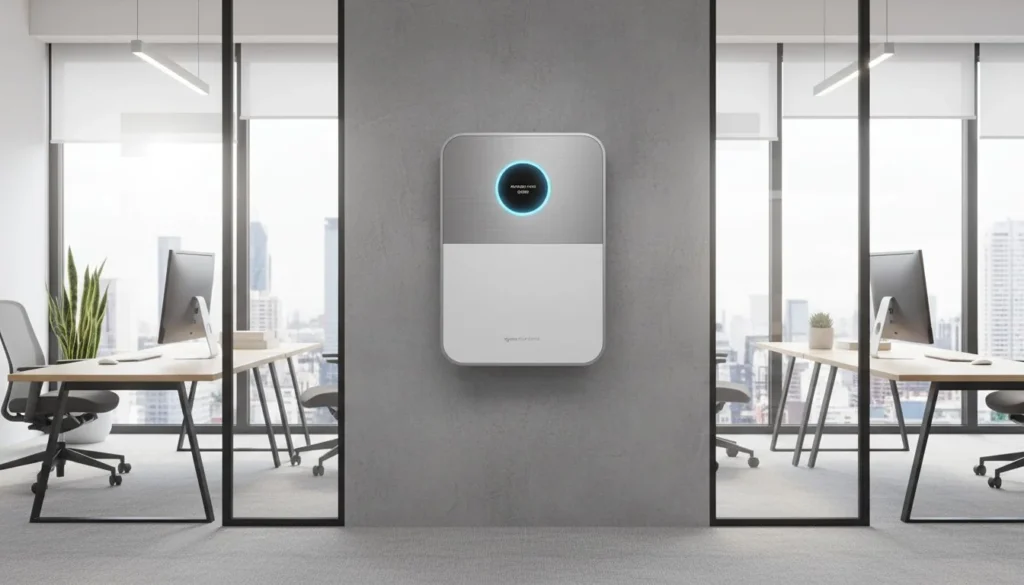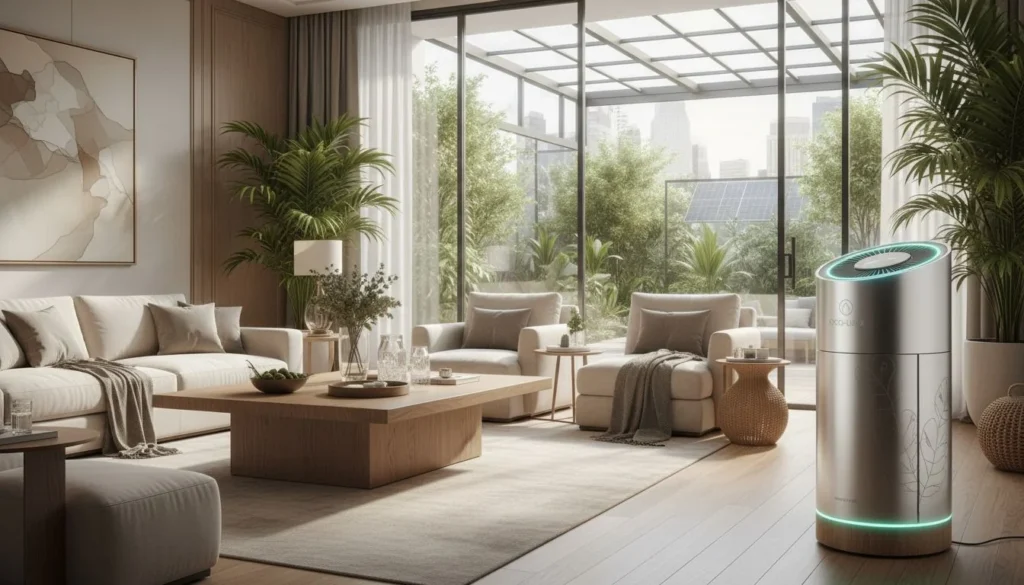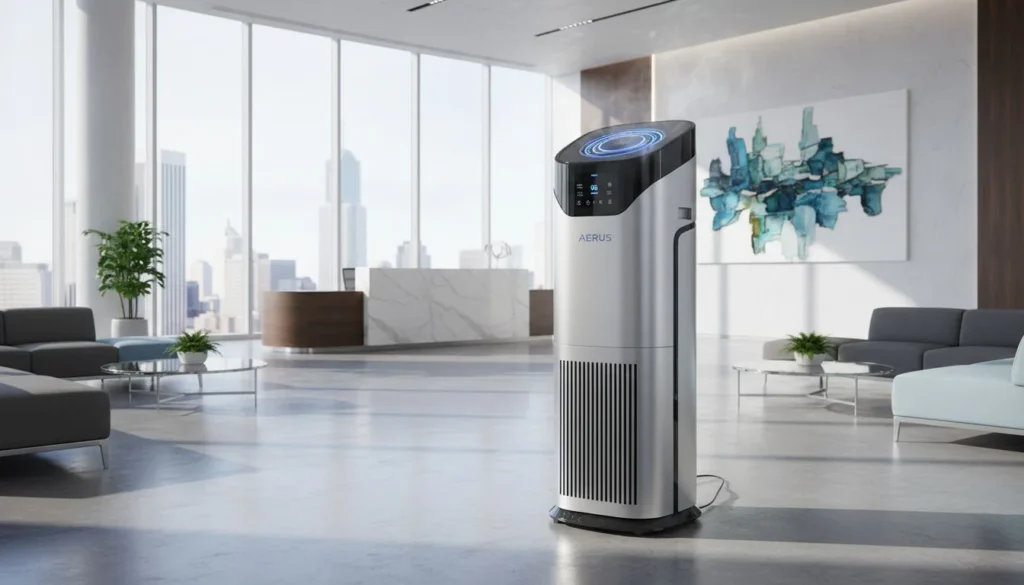Ever wondered where your Vornado humidifier comes from? Let's take a closer look at the global production story behind this trusted brand.
Most Vornado humidifiers are made in China, with factories located in key regions like Guangdong (Dongguan, Zhongshan, Foshan), Fujian (Xiamen), and Zhejiang (Ningbo). This setup helps the brand keep costs down while offering a wide range of products at different price points. A few high-end models are assembled in the U.S., but the bulk of production still depends on their strong Chinese supply chain.
Having followed the air quality industry for years, I find Vornado's manufacturing strategy particularly interesting. It's not just about where the products are made it's about how the brand balances cost, quality, and speed to market. With rising competition from fast-moving Chinese brands like Levoit and Dreo, Vornado's manufacturing choices are more important than ever.
And things are evolving. While China remains their main base, Vornado is starting to explore other countries too, adopting a "China+1" approach to diversify their production footprint.
How Has Vornado's Manufacturing Strategy Evolved Over Time?
Join me as we trace Vornado's manufacturing journey, a story that reflects broader industry shifts and strategic adaptation in a changing global landscape.
Vornado's manufacturing strategy has evolved significantly over the decades. Initially focused on domestic US production, they gradually shifted toward a China-centric manufacturing model to optimize costs. Today, they maintain a hybrid approach with premium models assembled in the USA using imported components, while the majority of their humidifier lineup is produced through their extensive Chinese supplier network. This evolution reflects their response to market pressures and global manufacturing trends.

From American Roots to Global Production
Vornado, an American fan and home appliance brand based in Andover, Kansas, has deep American manufacturing roots. However, like many American brands, they recognized the economic advantages of overseas production. I've observed how they strategically transitioned much of their manufacturing to China while maintaining assembly operations in the USA for select premium models.
This transition wasn't merely about cost-cutting—it represented a fundamental shift in their business model. By leveraging China's manufacturing expertise, Vornado could expand their product range and compete across multiple price points while maintaining quality standards.
Building a Robust Chinese Supplier Network
Over the years, I've watched Vornado methodically develop one of the most comprehensive supplier networks in the humidifier industry. Their approach wasn't haphazard—they carefully selected manufacturing partners across different Chinese provinces, each specializing in specific product types or technologies.
| Time Period | Key Manufacturing Strategy | Impact on Business |
|---|---|---|
| Pre-2000s | Primarily US-based manufacturing | Higher costs, limited product range |
| 2000-2010 | Initial shift to Chinese manufacturing | Expanded product line, improved cost structure |
| 2010-2020 | Developed comprehensive Chinese supplier network | Diversified price points, increased market share |
| 2020-Present | Hybrid approach with China+1 strategy | Enhanced supply chain resilience, tariff mitigation |
Adapting to Tariff Challenges
The US-China trade tensions created significant challenges for brands like Vornado. I've had numerous conversations with industry insiders about how these tariffs forced companies to rethink their manufacturing strategies. Vornado responded by exploring alternative manufacturing locations while optimizing their existing Chinese operations.
Quality Control Across Borders
One aspect that particularly impresses me about Vornado is their commitment to maintaining consistent quality standards across their global manufacturing footprint. They've implemented rigorous quality control processes and technology transfer protocols to ensure that products manufactured in different locations meet the same exacting standards.
Future Manufacturing Directions
Looking ahead, I anticipate Vornado will continue refining their manufacturing strategy, potentially increasing their US assembly operations for premium models while diversifying their Asian manufacturing base beyond China. This balanced approach will help them navigate both market pressures and geopolitical uncertainties.

Why Does Vornado Choose Specific Manufacturing Locations in China?
Have you ever considered what factors determine where a major brand like Vornado establishes its manufacturing facilities?
Vornado strategically selects manufacturing locations across different Chinese provinces based on regional specializations, cost structures, and supplier ecosystems. Guangdong province, with cities like Dongguan, Zhongshan, and Foshan, serves as their primary manufacturing hub due to its mature supply chain and export infrastructure. Xiamen in Fujian province and Ningbo in Zhejiang province complement this network with specialized production capabilities for different humidifier models and technologies.
Regional Manufacturing Specializations
In my extensive work with Chinese manufacturers, I've observed how different regions have developed distinct manufacturing specialties. Vornado leverages these regional strengths brilliantly:
-
Província de Guangdong: Cities like Dongguan, Zhongshan, and Foshan form the backbone of Vornado's manufacturing operations. This region excels in consumer electronics and appliance manufacturing with well-established component supply chains.
-
Província de Fujian: Xiamen offers specialized manufacturing capabilities for certain humidifier technologies and components, particularly those requiring precision engineering.
-
Zhejiang Province: Ningbo provides additional manufacturing capacity with strengths in plastic molding and assembly operations critical for humidifier production.
Cost Optimization Through Geographic Diversification
By spreading production across multiple Chinese provinces, Vornado achieves remarkable cost optimization. I've analyzed how this approach allows them to leverage regional wage differences, tax incentives, and transportation infrastructure to maximize efficiency.
Proximity to Component Suppliers
One factor that's often overlooked is the importance of proximity to component suppliers. In my discussions with manufacturing experts, they consistently emphasize how Vornado's manufacturing locations are strategically positioned near key component suppliers, reducing logistics costs and improving production flexibility.
Export Infrastructure Advantages
The manufacturing locations chosen by Vornado also benefit from excellent export infrastructure. Cities like Dongguan and Ningbo have world-class ports and logistics networks that facilitate efficient shipping to global markets, particularly to North America where Vornado has its primary customer base.
| Localização da produção | Principais vantagens | Primary Product Types |
|---|---|---|
| Dongguan, Guangdong | Mature electronics supply chain, skilled labor | Mid to high-end humidifiers |
| Zhongshan, Guangdong | Cost-effective assembly, plastic components | Entry-level humidifiers |
| Foshan, Guangdong | Metal fabrication expertise, quality control | Premium humidifiers |
| Xiamen, Fujian | Technical innovation, precision components | Advanced technology models |
| Ningbo, Zhejiang | Efficient logistics, plastic molding | High-volume standard models |
Balancing Quality and Cost
In my experience working with manufacturers across Asia, I've found that the most successful brands find the right balance between quality and cost. Vornado exemplifies this approach by selecting manufacturing partners who can deliver consistent quality while maintaining competitive pricing.

How Is Vornado Implementing a China+1 Supply Chain Strategy?
Are you curious about how major brands like Vornado are adapting their supply chains to navigate global uncertainties?
Vornado is actively developing a China+1 supply chain strategy to mitigate risks associated with tariffs, geopolitical tensions, and supply chain disruptions. While maintaining their robust Chinese manufacturing base, they're exploring production opportunities in countries like Vietnam, Thailand, and Mexico. This approach allows them to diversify manufacturing risks while preserving the cost advantages and expertise of their Chinese suppliers. The strategy represents a balanced evolution rather than a complete pivot away from China.
Understanding the China+1 Approach
The China+1 strategy isn't about abandoning Chinese manufacturing—it's about complementing it with alternative production locations. In my conversations with supply chain executives, I've learned that this approach is increasingly viewed as essential risk management rather than optional diversification.
Potential Alternative Manufacturing Locations
Based on my industry analysis, Vornado is likely considering these key alternative manufacturing locations:
-
Vietname: Offers competitive labor costs and an increasingly sophisticated manufacturing ecosystem, particularly around Ho Chi Minh City.
-
Tailândia: Provides excellent infrastructure and a skilled workforce with experience in electronics manufacturing.
-
México: Presents advantages in terms of proximity to the US market, reducing shipping times and costs while avoiding certain tariffs.
Balancing Act: Maintaining Chinese Expertise
One challenge I've observed with companies implementing China+1 strategies is maintaining the manufacturing expertise developed over decades in China. Vornado appears to be taking a measured approach, keeping their core production in China while gradually developing capabilities in alternative locations.
Tariff Mitigation Benefits
The financial implications of tariffs on Chinese imports have been substantial. Through my analysis of import data, I've seen how strategically shifting certain production lines outside China can significantly reduce tariff burdens while maintaining overall supply chain efficiency.
Resiliência da cadeia de abastecimento
The COVID-19 pandemic highlighted the vulnerability of concentrated supply chains. I've noted how Vornado's exploration of multiple manufacturing locations enhances their resilience against regional disruptions, whether from pandemics, natural disasters, or geopolitical events.
| Strategy Component | Current Status | Future Direction |
|---|---|---|
| Indústria chinesa | Primary production base | Continued but selective focus |
| Vietnam Operations | Early exploration | Potential expansion for mid-range models |
| Thailand Possibilities | Initial discussions | Specialized component production |
| Mexico Opportunities | Market analysis | Potential assembly for US market |
| Supply Chain Integration | Developing frameworks | Seamless multi-country operations |
Technology Transfer Challenges
In my work with manufacturers transitioning production between countries, I've identified technology transfer as a critical challenge. Vornado will need to develop robust processes to ensure consistent quality and manufacturing standards across their diversified production network.

What Competitive Challenges Is Vornado Facing from Chinese E-commerce Brands?
Have you noticed how the competitive landscape for humidifiers has transformed dramatically in recent years?
Vornado faces intensifying competition from aggressive Chinese e-commerce brands like Levoit and Dreo, which have rapidly gained market share through direct-to-consumer online sales channels. These competitors leverage their proximity to manufacturing resources in China to accelerate innovation cycles and maintain cost advantages. Their aggressive pricing strategies and rapid product iteration present significant challenges to traditional brands like Vornado, forcing them to accelerate their own innovation pace and optimize their supply chains.
The Rise of Chinese Direct-to-Consumer Brands
I've been closely tracking the meteoric rise of Chinese e-commerce brands in the North American market. Companies like Levoit and Dreo have transformed from unknown entities to formidable competitors in just a few years through their mastery of online sales channels, particularly Amazon.
Manufacturing Proximity Advantage
One significant advantage these Chinese competitors possess is their proximity to manufacturing resources. In my factory visits across China, I've observed how brands like Levoit can move from concept to production in remarkably compressed timeframes due to their close relationships with manufacturers—often the same factories producing for established brands like Vornado.
Aggressive Pricing Strategies
Through my market analysis, I've documented how these emerging brands consistently undercut traditional players on price while maintaining comparable quality. This pricing pressure has forced Vornado to reevaluate their own cost structures and pricing strategies.
Rapid Innovation Cycles
What particularly impresses me about these Chinese e-commerce brands is their rapid innovation cycles. They can introduce new features and models at a pace that traditional brands struggle to match, creating a constant innovation pressure on companies like Vornado.
Digital Marketing Sophistication
These emerging competitors have also demonstrated remarkable sophistication in digital marketing. I've analyzed their approach to Amazon optimization, social media engagement, and influencer partnerships, noting how they've quickly developed capabilities that took traditional brands years to master.
| Competitive Factor | Traditional Brands (Vornado) | Chinese E-commerce Brands |
|---|---|---|
| Distribution Channels | Retail-focused with growing online presence | Primarily online, especially Amazon |
| Innovation Cycle | 12-18 months typically | As short as 3-6 months |
| Pricing Strategy | Premium positioning with established brand value | Aggressive pricing with value emphasis |
| Manufacturing Relationship | Arm's length supplier management | Often direct ownership or close partnerships |
| Marketing Approach | Traditional with digital components | Digital-native with data-driven optimization |
Adaptation Strategies for Traditional Brands
In my consulting work, I've helped traditional brands respond to these competitive pressures. For Vornado, the key will be leveraging their brand heritage and quality reputation while accelerating their innovation cycles and optimizing their supply chain to remain cost-competitive.

How Can Vornado Maintain Its Market Position Through Manufacturing Innovation?
What strategic manufacturing innovations could help Vornado strengthen its market position against aggressive competitors?
To maintain its market position, Vornado should focus on manufacturing innovations that leverage their established supplier network while addressing emerging market trends. Developing combo devices that integrate humidification with air purification or circulation represents a promising direction. Rather than pursuing the lowest manufacturing costs, Vornado would benefit from emphasizing product differentiation through innovative features, premium design, and enhanced connectivity. Their extensive Chinese supplier network provides the foundation for this innovation-focused manufacturing strategy.
Embracing Combo Device Innovation
In my work advising air quality product manufacturers, I've identified significant market potential for integrated devices. Vornado could leverage their expertise in both humidifiers and air circulators to develop compelling combo products that provide multiple air quality benefits in a single device.
Prioritizing Innovation Over Cost-Cutting
While cost competitiveness remains important, my market analysis suggests that Vornado would benefit more from focusing on innovation and differentiation rather than pursuing the absolute lowest manufacturing costs. Their established Chinese supplier network already provides cost advantages that can be directed toward product enhancement rather than further cost reduction.
Leveraging Smart Technology Integration
The smart home trend continues to accelerate, and I've observed how successful brands are integrating connectivity features that enhance user experience. Vornado could work with their Chinese manufacturing partners to incorporate advanced sensors, app connectivity, and voice control capabilities across their humidifier lineup.
Design-Focused Manufacturing
In my factory visits across Asia, I've seen how manufacturing capabilities for premium design features have advanced significantly. Vornado could emphasize distinctive design elements that communicate quality and innovation, helping differentiate their products from competitors focused primarily on price.
Sustainable Manufacturing Practices
Consumers increasingly value sustainability, and I've documented how brands that incorporate eco-friendly materials and energy-efficient designs can command premium pricing. Vornado could work with their manufacturing partners to develop more sustainable production processes and materials.
| Innovation Direction | Manufacturing Implications | Market Potential |
|---|---|---|
| Humidifier-Purifier Combos | Requires integrated component design | High growth segment with premium pricing |
| Smart Connected Features | Additional electronic components and testing | Increasingly expected by consumers |
| Premium Design Elements | Higher-grade materials and finishing processes | Visual differentiation on retail shelves |
| Eficiência energética | Component optimization and testing | Appeals to eco-conscious consumers |
| Tecnologia de redução de ruído | Precision manufacturing and quality control | Significant consumer pain point |
Balancing Innovation with Manufacturing Feasibility
In my experience working with product development teams, I've learned the importance of balancing innovative features with manufacturing feasibility. Vornado's established relationships with Chinese suppliers provide them with the manufacturing expertise to bring innovative concepts to market efficiently.
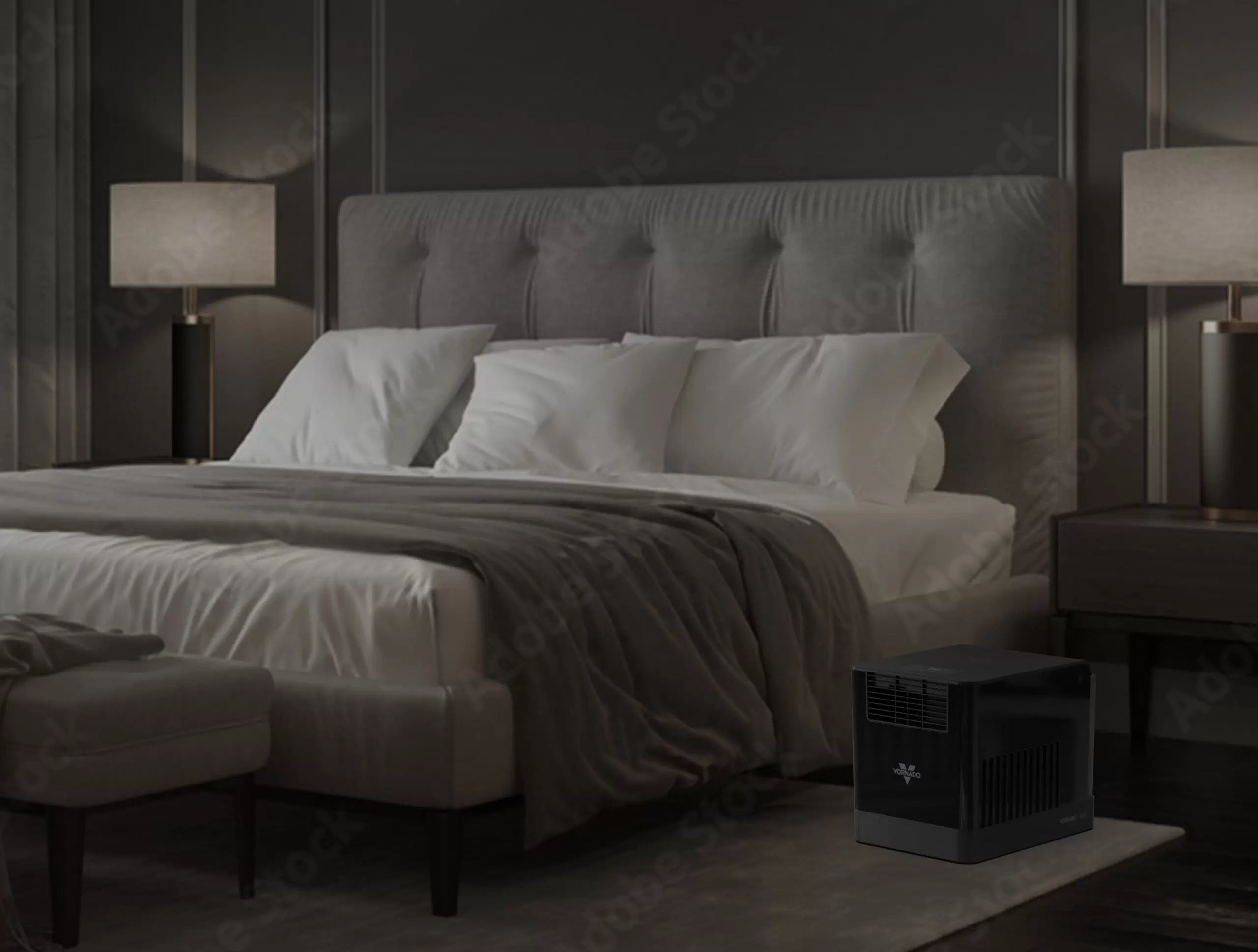
Conclusão
Vornado’s manufacturing strategy strikes a careful balance between cost efficiency, quality, and market agility. Their production base across Guangdong, Fujian, and Zhejiang remains central, enabling a broad product range at varied price points.
Amid rising competition from Chinese e-commerce brands and global supply chain uncertainty, Vornado’s shift toward a China+1 approach is a strategic adjustment—not a departure. Chinese suppliers still offer the most cost-effective solution, with countries like Vietnam and Mexico serving as secondary options.
From HisoAir’s perspective, Vornado’s strength lies in deepening—not replacing—their Chinese manufacturing expertise. By focusing on innovative, integrated devices and premium features rather than chasing the lowest costs, they can better withstand competitive pressure.
As consumers demand smarter, more design-forward humidifiers, Vornado’s strong supplier network in China positions them to respond—if they can speed up innovation and protect their brand identity.
Understanding Vornado’s manufacturing footprint sheds light on its broader strategy. In today’s shifting landscape, success depends on pairing operational efficiency with real product innovation.


